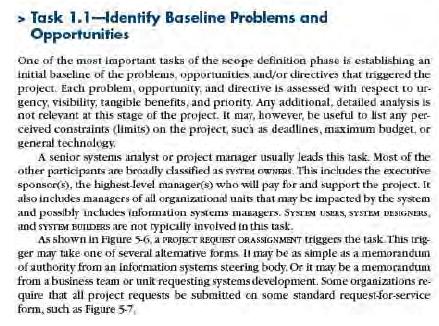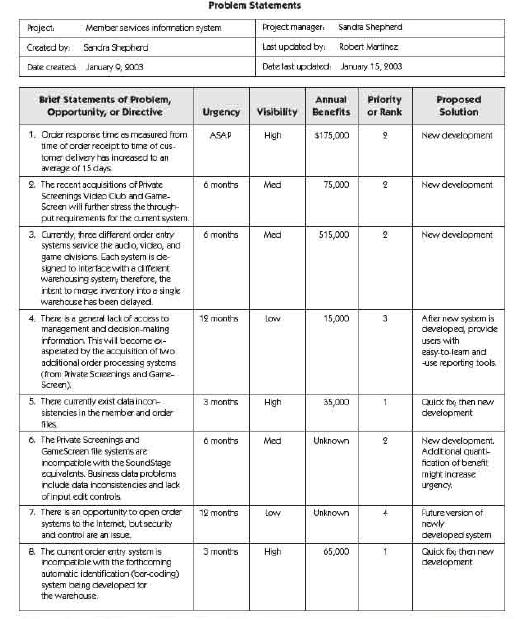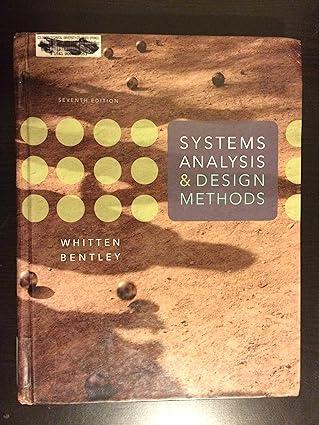Select an information system with which you are familiar, and which you feel needs to be improved,
Question:
Select an information system with which you are familiar, and which you feel needs to be improved, based upon your experiences as an employee, customer, other system user, or system owner, Switch roles and perspectives is necessary to perform or answer the following:
a. Describe the nature of the information system you have selected.
b. Describe the organization that owns and maintains the information system.
c. Identify the baseline problems and opportunities, per Task 1.1

d. Develop a preliminary problem statement, using the format shown in Figure 5-8.

Fantastic news! We've Found the answer you've been seeking!
Step by Step Answer:
Related Book For 

Systems Analysis And Design Methods
ISBN: 9780073052335
7th Edition
Authors: Jeffrey Whitten, Lonnie Bentley
Question Posted:





